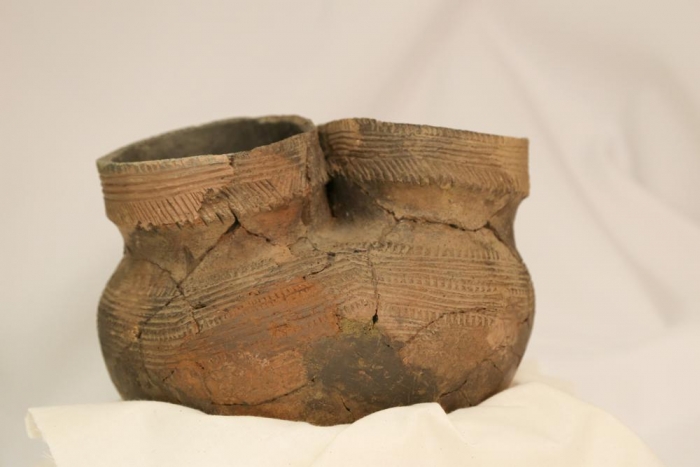
Colgate University returned to the Oneida Indian Nation more than 1,500 items once buried with ancestral remains — a collection of culturally significant items that includes pendants, pots, bells and turtle shell rattles, some dating back 400 years.
The “funerary objects” were purchased in 1959 from the family of an amateur archaeologist who collected them from sites in upstate New York and have been housed at the university’s Longyear Museum of Anthropology. Their repatriation ceremony was held Wednesday, Nov. 9, at Colgate, which is located on the Oneida’s ancestral territory.
“It’s making things right again. It’s correcting a wrong,” Oneida Indian Nation Representative Ray Halbritter said in an interview. “The acquisition of these items, it’s quite an indefensible practice. They’ve been absent. They’re not where they should be … on the land back with our people.”
Halbritter said this is one of the largest single repatriations in the state and praised the cooperation from Colgate, which began a series of transfers in 1995 with the return of seven sets of remains and funerary objects.
Related Stories
NFL “Golden Shovel” Moves From Inglewood to Phoenix for Super Bowl LVII
Dorsey Passing Game Defeats Crenshaw 42-7
The 1,520 returned items are called funerary objects because it’s reasonably believed they were placed with individual human remains either at the time of death or later.
The items being returned to the Oneidas also include glass beads, ceramic pottery, knives, harpoons and a stone pipe. They were collected by Herbert Bigford Sr. during excavations of eight sites between 1924 and 1957, according to repatriation records Colgate filed with the federal government.
A man by that name was the treasurer in 1952 for the local Chenango Archeology Society, whose members went on “digging tours” each summer and met in each other’s homes for programs on Native American archaeology, according to a story in the Sunday Press of Binghamton on the society’s plans for school presentations.
Some of the repatriated items date as far back as 1600. And more than 900 of the items came from a single excavation site in Stockbridge, south of the Oneida’s current reservation in central New York. That includes 286 Wampum, 106 shell beads, 179 glass beads and 68 wolf teeth, according to records.
The Native American Graves Protection and Repatriation Act requires federally funded institutions, such as universities, to return remains and cultural items.
Nationwide, some 870,000 Native American artifacts — including nearly 110,000 human remains — that should be returned to tribes under federal law are still in the possession of colleges, museums and other institutions, according to a recent Associated Press review of data maintained by the National Park Service.
Colgate officials said the ongoing repatriations involving the university are a step toward repairing relationships with Native American communities.
“This is important work, and it will continue until we are confident that all sacred items that can be traced back to their rightful owners are returned,” Colgate President Brian W. Casey said in a statement.
Some of the items being returned by Colgate had been on display or used for teaching in the past, though the university placed restrictions on their use for those purposes starting in 1994.
Representative of the Oneidas, Colgate and the museum will attend the repatriation ceremony at the university.
The items will be safely stored while the Oneidas decide what to do them, whether it’s returning them to the earth or some other option, Halbritter said.
“Our ceremonies to repatriate these items will help ensure that our story is going to be told in our own voices,” Halbritter said, “and for generations to come.”
___
AP Researcher Jennifer Farrar in New York contributed.



